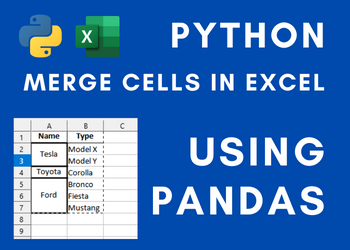Are Python Dictionaries Ordered?
When you hear the word dictionary, it is nothing but a book that tells you the meaning of a particular word in different possible ways that it can be used.
When you refer to the book or in modern days a repository on the web, you will see that there are two columns, one that lists the word and the other the meaning.
We are referring to the same thing in Python when we talk about dictionaries.
Visit these articles to merge cells in excel, add borders, and generate graphs using Python Pandas.
What are Python Dictionaries?
Python dictionaries are datatypes that can be used to store data in the form of key and value pairs. They are written using curly brackets that have keys and values.
How do you Create a Python Dictionary?
foodorder = {
"Pizza": 3,
"Sushi": 2,
"Idli": 10
}The above code is how we define python dictionaries. Like any other datatype, this starts with initiating the variable. The variable is initialized with data within the curly brackets.
Just like the real-time dictionaries that we were referring to at the beginning of this article, we are going to be adding two columns to the dictionary.
The first one will be the key and the second one will be the value, and just like the dictionaries that we use in real-time, we cannot have a duplicate key added to the dictionary.
Even if a duplicate key is added to the dictionary, the key will be overwritten with the new value.
Should I use Dictionaries in Python?
Dictionaries are to be used only when there you want to optimize the process of retrieval and you have a combination of key and value to implement this.
What are the Advantages of Dictionary in Python?
Unlike lists, dictionaries lookup for the key and retrieve really fast. While retrieving requires a walk-through when it comes to a list until it finds the result. This is where the dictionaries are useful.
On the contrary, they are mutable, in the sense that the values of the dictionaries can be changed. So keeping in mind, carefully use the dictionaries when necessary.
What is the Difference Between a List and Dictionary?
Digging a little further, let us find out the differences between a list and a dictionary.
| List | Dictionary |
|---|---|
| A list is a set of values that are stored in a variable like an array in C | Dictionary is a combination of key and value structure |
| The list is defined between two square brackets | Dictionary is defined between two curly brackets |
| The list consists only the value | Dictionary consists of a key associated with the value |
| Access the data using the indices | Access the data using the key |
Is There Order in a Python Dictionary?
Now, coming to the answer, let us first know what is the difference between an ordered dictionary and an unordered dictionary.
The dictionary consists of items that have a definitive order and that order cannot be changed.
On the other hand, when a dictionary does not have a defined order it cannot be referred to by using an index them it is unordered.
Till Python 3.6 dictionaries were unordered. It is only after version 3.6, i.e. from 3.7, the dictionaries are ordered. So, ordered dictionaries were introduced only from Python version 3.7.





